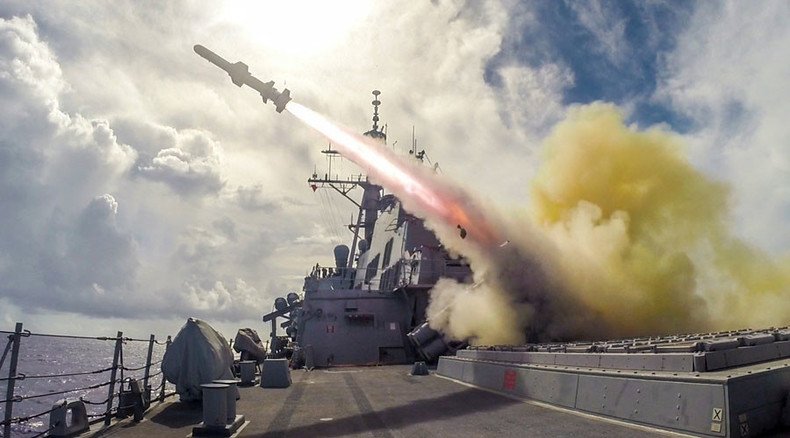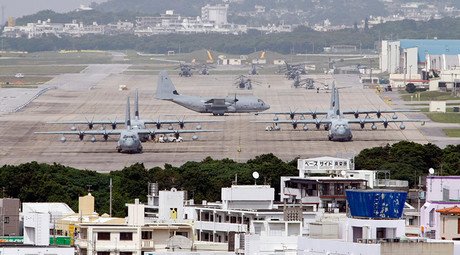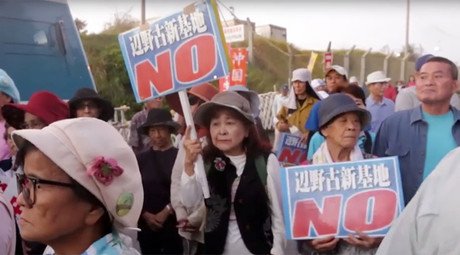Guam, Marianas brace for massive US military redeployment

Thousands of American military personnel are expected to arrive in the Mariana Islands over the next several years, as part of the US strategic “pivot” to East Asia. Many will come from Okinawa, Japan, where many local residents want US bases closed.
Military facilities in Guam, the archipelago’s largest island and a US possession since 1898, have been reinforced and updated in anticipation of almost 5,000 Marines, as well as new aircraft, submarines and patrol boats. The infrastructure upgrades will “elevate the tiny Pacific island into a maritime strategic hub, a key element laid out by the Pentagon in the Asia-Pacific Maritime Security Strategy,” according to the US military newspaper Stars and Stripes.
Infrastructure upgrades on Guam to boost US #military services’ capabilities in Pacific: https://t.co/uhSmzXnNgspic.twitter.com/gP5z36hcYA
— Stars and Stripes (@starsandstripes) November 23, 2015“We have two 11,000-foot concrete runways, both rebuilt within the last 10 years,” Steven Wolborsky, director of plans, program and readiness at the Andersen Air Force Base told Stars and Stripes, adding that roughly 19 million pounds of explosives are now stored across the facility’s 4,400 acres.
“We have enough parking for more than 155 aircraft, with a robust in-ground refueling infrastructure,” Wolborsky added. “We have the largest capacity of jet fuel in the Air Force at 66 million gallons ‒ coupled with an equal amount down south with the Navy.”
The construction has been driven primarily by the plan to move thousands of Marines to Guam from Okinawa, Captain Alfred Anderson, the base commander, said. The redeployment is expected by 2023 or so.
More than a third of the estimated $8.7 billion cost of building the new facilities for the Marines is being funded by Japan, according to McClatchy reporter Adam Ashton. The Japanese residents of Okinawa have complained for years about the impact of US military presence, ranging from drugs, alcoholism, and sexual abuse to environmental damage.
Originally the Pentagon envisioned a shift of 8,600 Marines and some 9,000 dependents from Okinawa, raising alarm among some residents of Guam that their island, with an area of only 212 square miles (549 km sq.) and a population of 160,000, would be overwhelmed.
Pressure from the activists representing the native Chamorro people, organized in a group called We Are Guahan, compelled the Pentagon to trim that number down to 4,800. Two thirds of that number would be there on rotation, without their families, reducing the pressure on the island even further.
The activists are not resting on their laurels, however, and are pressing on against the Pentagon’s plans to install firing ranges on the islands of Tinian and Pagan. The new facilities are supposed to integrate with the US Navy’s underwater training range in the nearby Mariana Trench.
While Guam is an unincorporated US territory, Pagan and Tinian belong to the Northern Mariana Islands Commonwealth, a US possession with the same status as Puerto Rico.
The island of Pagan is uninhabited at the moment, although the island’s inhabitants still make claims to the land after they were forced to evacuate due to volcanic eruptions in 1981. Tinian has an area of 39 square miles (101 km sq.) and just over 3,000 residents. US Marines seized the island from a Japanese garrison after a weeklong battle in July 1944. A year later, the massive airbase built on the island was used to launch the nuclear attacks on Hiroshima and Nagasaki.
SPECIAL REPORT: U.S. Marines are coming to Guam, which isn't sure how it feels about that. https://t.co/5JYwwafGMLpic.twitter.com/cwnjhwlcOE
— McClatchyDC (@McClatchyDC) November 22, 2015Joining the residents in opposition to the Marine firing range plan is Alter City Group, a Chinese company based in Macau that wanted to invest $500 million to build a casino complex on Tinian. The firing range would “significantly alter the island as we know it in dramatically irreparable ways,” and impose burdens on the island both “significant and unsustainable,” the ACG said in a statement, as quoted by McClatchy.
Some political and business leaders in Guam, however, fear the military may drop its plans altogether if the Marines are barred from using Tinian and Pagan for live-fire exercises. They have established the Guam-US Security Alliance to push for the military buildup.
“This is so big that people are going to have to learn to get along,” John Thomas Brown, director of the Alliance, told McClatchy. “It can be done. It should be done. Time is wasting.”
Most of Guam’s income comes from Japanese tourism, followed by US military spending.














